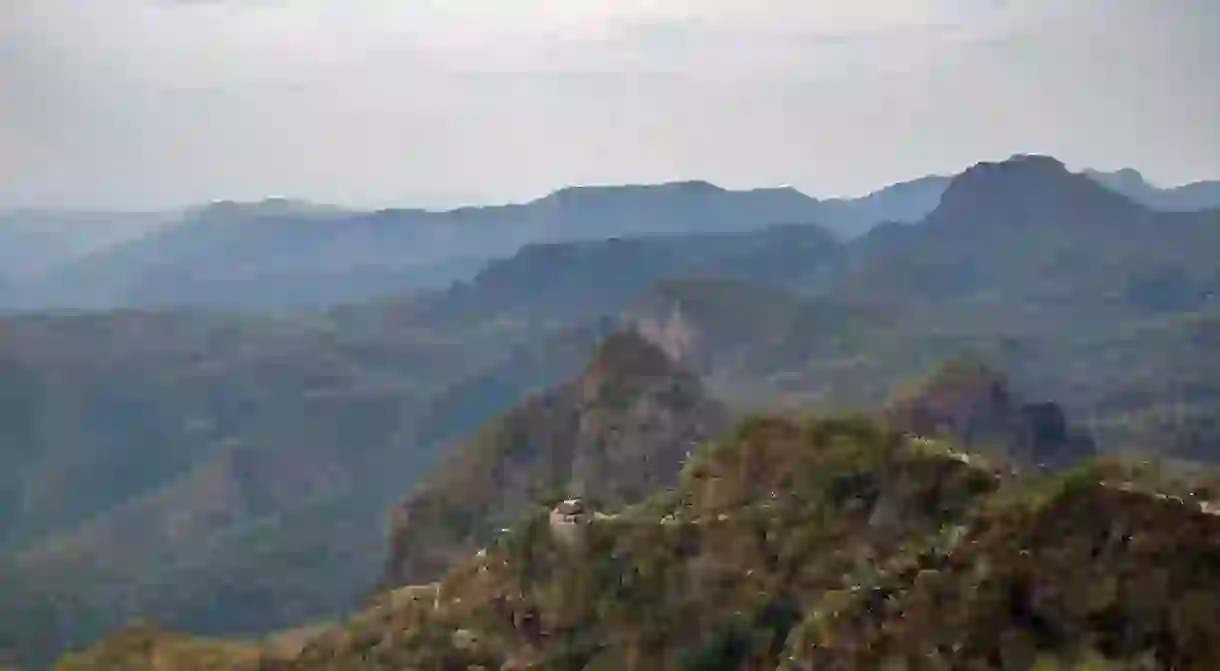Best Places to Visit in Pachmarhi, India

Popularly known as the ‘Queen of Satpura Ranges’, Pachmarhi is the only hill station in the state of Madhya Pradesh. A beautiful retreat and a great tourist spot, it is the perfect place for nature lovers. To help you plan your trip better, here’s our list of famous attractions to visit in this charming town.
Bee Fall
This is a 35-meter high beautiful waterfall that provides Pachmarhi with its drinking water. The view around the fall is picturesque, and you will always find tourists flocking to this place. Adventure junkies can have a great time here, enjoying trekking from Bee Fall to Prapaat Kund. Wondering why it’s called Bee Fall? It’s because of the humming sound created by the falling water.

Pandava Caves
These caves in the mountains of Pachmarhi, are believed to have been the place of shelter for the Pandavas (from the epic Mahabharata) during the period of their exile. Being of considerable historical significance, these are now protected by the state government. During the 1st Century A.D., the place was also known to have been inhabited by Buddhist monks. Upon your visit, you will find many attractive paintings on the cave walls too.

Jata Shankar Caves
Considered to be quite sacred, legend has it that to escape from the wrath of Bhasmasur (a devil), Lord Shiva hid himself in these caves. It has a natural Shivalinga under a massive rock’s shadow, and the rock formation on the outside walls of the caves appear like the matted hair of Lord Shiva, hence the name. On close observation, you will also find stone formations like that of the mythological snake Sheshnag, which had many heads. You must visit the place around Mahashivratri as it is celebrated with great fervor at the caves every year.


Dhoopgarh
Dhoopgarh is the tallest peak of Madhya Pradesh, and measures around 1,350 meters. Highest of the Satpura ranges, it is a spectacular hilltop famous for spellbinding sunrises and sunsets. The only way to reach Dhoopgarh is by trekking, however, the path can be a tough one as it involves going through valleys and waterfalls.

Mahadeo Hill
This is an ancient shrine dedicated to Lord Shiva, and also a famous spiritual site. It holds one of the most beautiful Shivalingas of the country, and is therefore visited by many tourists. On the eastern side of the hill, there’s a cave that has amazing cave paintings and a holy pond, where devotees take dips.
Handi Khoh
Handi Khoh is a deep valley and Central India’s most spectacular ravines. According to the mythological history of the place, it once had a beautiful lake, which completely dried away. Now the valley serves as a natural abode for many floral species. It is a quiet place where you can go to get a close brush with nature.

Duchess Fall
Another interesting waterfall to see in Pachmarhi is the Duchess Fall. At this fall, water crashes on the rocks from over 100 meters and creates a sound like that of a roar. Though a small waterfall, it is a picture-perfect place where you would either want to go alone or with someone special. You can spend some time at a shallow pond here, appreciating the beauty of nature.

Priyadarshini Point
Priyadarshini Point is the hilltop from where you get an eagle’s eye view of the entire town. Captain James Forsyth discovered the town in the year 1857, and therefore it is also called Forsyth Point. For photographers and nature lovers, it is a great place to explore.
Chauragarh
Chauragarh is another hilltop in Pachmarhi and has an ancient Shiva Temple. While going up the hill during Mahashivratri, devotees carry Trishuls (Trident – Lord Shiva’s symbol) in their hands. Outside the temples, a great number of Trishuls are erected – the site looks truly magnificent.

Christ Church
Some of the British architecture can also be seen in the town. It has a red sandstone church which was built between 1875 to 1923. The church well reflects Gothic style architecture. Stainless glass, beautiful altars and pretty walls, make this church a must-visit place in Pachmarhi. An interesting thing to know about the church is that no pillars were ever constructed to support the building.














